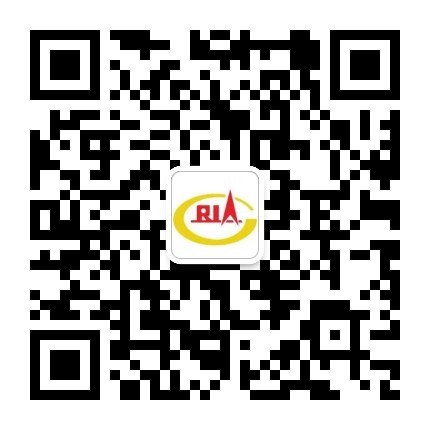1. Production Status
By the end of December 2015, China’s CR production capacity had been 83,000 tons, accounting for about 20.34% of the total global CR production capacity.
Among it, as for domestic enterprises, Chongqing Changshou Chemical Co., Ltd. had a capacity of 28,000 tons/year; and Shanxi Synthetic Rubber Group Co., Ltd. had a capacity of 25,000 tons/ year. In 2010, the 30,000 tons/year CR production equipment jointly built by Shanxi Synthetic Rubber Group Co., Ltd. and Armenia Nairit Company as per 60:40 shares was completed and put into production. This equipment was operated by Shanxi Synthetic Rubber Group Co., Ltd. and belonged to China National Bluestar Group/ST New Materials Company.
In recent years, although Sichuan Changning (the planned production capacity of the equipment is 50,000 tons/year), Dongying Port Economic Develop Area (the planned production capacity of the equipment is 50,000 tons/year), Inner Mongolia Lantai Industry Co., ltd. (the planned production capacity of the equipment is 20,000 tons/ year), etc. also plan to newly build CR production equipment, no report on putting into operation has been read so far.
2. Import and Export Situation
According to the statistics of the Customs, China’s import volume of CR in 2000 was 18,800 tons, which increased to 30,900 tons in 2004 to record a historical high.
In May 2005, China began to levy anti-dumping duty on imported CR originating in Japan, America and EU, with a time limit of 5 years. During this period, China’s CR import volume gradually decreased from 25,600 tons in 2005 to 19,000 tons in 2009. In 2010, increase in domestic demand resulted in that the import volume increased to 24,700 tons.
On May 9, 2010, the Ministry of Commerce carried out final review investigation on CR imported from the above countries and continued to implement anti-dumping measures for five years since May 10, 2011. The import volume in 2011 was 20,400 tons and decreased to 17,700 tons in 2015, which gradually decreased year by year. At the same time of import, China’s CR has certain amount of export. See Table 2 for China’s CR import conditions from 2005 to 2015.
Table 2: China’s CR Import Conditions from 2005 to 2015
|
Year |
Import conditions |
|
|
Import volume/ten thousand tons |
Import value/USD Ten Thousand |
|
|
2005 2006 2007 2008 2009 2010 2011 2012 2013 2014 2015 |
2.56 2.31 2.27 2.24 1.90 2.47 2.04 2.00 2.00 1.97 1.77 |
5494.30 5908.42 7102.82 7527.69 6050.77 8682.16 8850.39 9425.25 8716.20 7983.95 6613.12 |
(1) Import Countries and Regions
According to the statistics of the Customs, China’s CR import is mainly from Japan and Germany. In 2015, the total import volume from these two countries and regions reached 17,300 tons, accounting for 97.74% of the total import volume, with a year-on-year decrease of 10.36%. See Table 3 for import countries and regions of China’s CR from 2012 to 2015.
Table 3: Import Countries and Regions of China’s CR from 2012 to 2015, Ten Thousand Tons
|
Import countries and regions |
2012 |
2013 |
2014 |
2015 |
|
Japan Germany China Taiwan Korea Others |
1.80 0.16 0.01 0.01 0.02 |
1.62 0.35 0.01 0.01 0.01 |
1.51 0.42 0.01 0.01 0.02 |
1.40 0.33 0.01 0.01 0.02 |
|
Total |
2.00 |
2.00 |
1.97 |
1.77 |
(2) Change Trend of Import Price
From 2005 to 2015, the average import unit price of China’s CR showed a development trend of fall after rise on the whole. The import unit price of China’s CR in 2005 was 2,147.27 dollars/ton and reached the ceiling price of 4,713.04 dollars/ton in recent years in 2012. Afterwards, the import unit price began to fall again, the import unit price in 2015 was 3,746.51 dollars/ton. See Fig. 1 for change in import unit price of China’s CR from 2005 to 2015.

Fig. 1: Change in Import Unit Price of China’s CR from 2005 to 2015
3. Consumption Status and Development Prospect
On the whole, change in China’s CR consumption is not too great. The apparent consumption was 66,600 tons in 2005, 61,300 tons in 2010 and 60,900 tons in 2015. Correspondingly, the self-sufficiency rate of the product was 63.06% in 2005, 66.56% in 2010 and 73.89% in 2015. See Fig. 2 for change in supply and demand of China’s CR from 2005 to 2015.

Fig. 2: Change in Supply and Demand of China’s CR from 2005 to 2015
Adhesive for shoemaking and building field is the largest application field of China’s CR, accounting for 60% of the total consumption; followed by industrial rubber products, accounting for 30% of the total consumption; in addition, 10% is used for electric wire and cable and other fields. Since the global economic trend slows down, China’s development speed enters “new normal”, plus substitution of other products such as EPDM, etc., the growth in domestic demand for CR will not be large. It is predicted that by 2020, China’s total consumption of CR will be about 80,000 tons ~ 85,000 tons.
4. Market Price
In recent years, China’s market price of CR shows a development trend of continuous decline on the whole.
The price was 49,000 Yuan/ton in January 2013, which began to fall in April, declined to 44,100 Yuan/ton in July and rose to 47,500 Yuan/ton in August, afterwards, the market price began to slightly decline, and declined to 47,200 Yuan/ton in December.
In 2014, the market price continued to slightly decline, the market price in January was the highest price of the whole year, 47,100 Yuan/ ton and the lowest price was 39,500 Yuan/ton in November.
The market price in 2015 continued to slightly fall on the basis of 2014. The price was 39,000 Yuan/ton in January, 35,000 Yuan/ton in September and continued to decline to be 32,500 Yuan/ton in December.
Due to weak downstream demand and fall in price of raw material, it is predicted that the market price of CR will remain low with no big changes over a period of time in the future.




